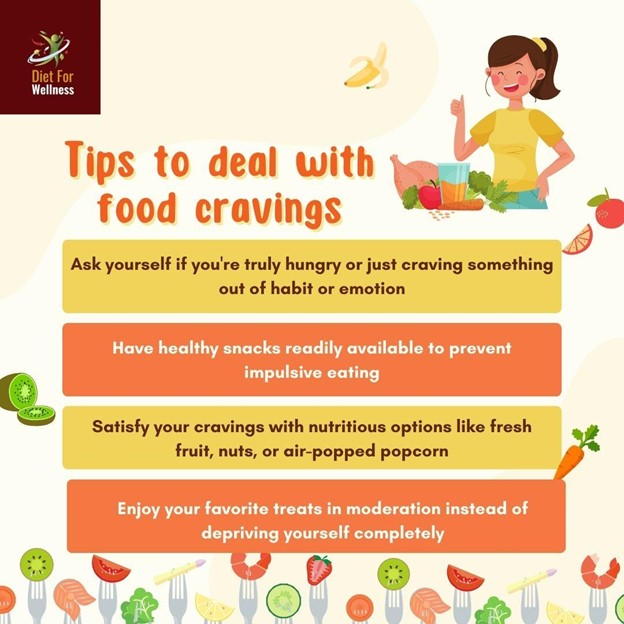Dealing with food cravings the right way

Do you find yourself occasionally succumbing to food cravings or feeling an overwhelming urge to indulge in specific foods? You’re not alone.
Research suggests that over 90% of people worldwide experience food cravings at some point. These cravings can be powerful, leading you to consume excessive amounts of calorie-dense, nutrient-poor, and highly palatable foods such as chocolate, cake, ice cream, and pizza. Unfortunately, indulging in these foods frequently can have detrimental effects on your health.
If you’re concerned about the frequency or intensity of your food cravings, there are several potential reasons why they occur and various ways with which you can manage them effectively.
Cravings can stem from various factors, including physiological, psychological, and environmental triggers. Physiological cravings may arise due to hormonal fluctuations, nutrient deficiencies, or blood sugar imbalances. Psychological cravings, on the other hand, are often linked to emotions, stress, or habits formed over time. Environmental cues, such as seeing or smelling delicious food, can also trigger cravings.
How to Deal with Cravings
- Mindful Eating- Practicing mindfulness can help you become more aware of your body’s hunger and fullness cues. Before giving in to a craving, pause and ask yourself if you’re truly hungry or if you’re eating out of habit or emotion. Tune into your body’s signals and differentiate between genuine hunger and cravings driven by other factors.
- Balanced Meals- Eating balanced meals that include a combination of protein, healthy fats, fiber, and carbohydrates can help stabilize blood sugar levels and reduce the likelihood of experiencing intense cravings. Aim to include a variety of nutrient-dense foods in your diet to satisfy your body’s nutritional needs and minimize cravings.
- Plan- Planning your meals and snacks can help prevent impulsive eating and reduce the likelihood of succumbing to cravings. Keep healthy snacks readily available, such as fresh fruit, nuts, or cut-up vegetables, to satisfy hunger between meals. Having a meal plan in place can also alleviate decision fatigue and make it easier to stick to your dietary goals.
- Find Healthy Alternatives- Instead of giving in to unhealthy cravings, try to find healthier alternatives that satisfy your taste buds without derailing your diet. For example, if you’re craving something sweet, opt for fresh fruit or a small piece of dark chocolate. If you feel like having something salty, have some air-popped popcorn or roasted chickpeas instead of munching on chips.
- Address Underlying Issues- Sometimes cravings are a sign of underlying issues such as stress, boredom, or emotional eating. If you find yourself turning to food for comfort or to cope with emotions, consider finding alternative ways to address these feelings, such as practicing relaxation techniques, engaging in hobbies, or seeking support from a therapist or counselor.
- Practice Moderation- Depriving yourself of your favorite foods entirely can often backfire and lead to binge eating or overindulgence later on. Instead of viewing certain foods as off-limits, practice moderation and allow yourself to enjoy them in small portions occasionally. By incorporating your favorite treats into your diet in a balanced way, you can satisfy cravings without derailing your progress.
Food cravings are a normal part of life, but they don’t have to control your eating habits. It is important to understand the underlying causes of cravings and implement strategies to deal with them effectively. This way you can overcome temptations and stay on track toward your health and wellness goals.
